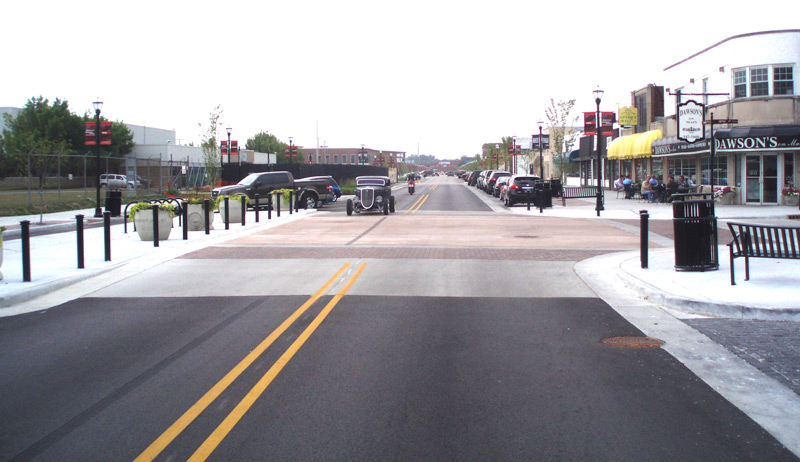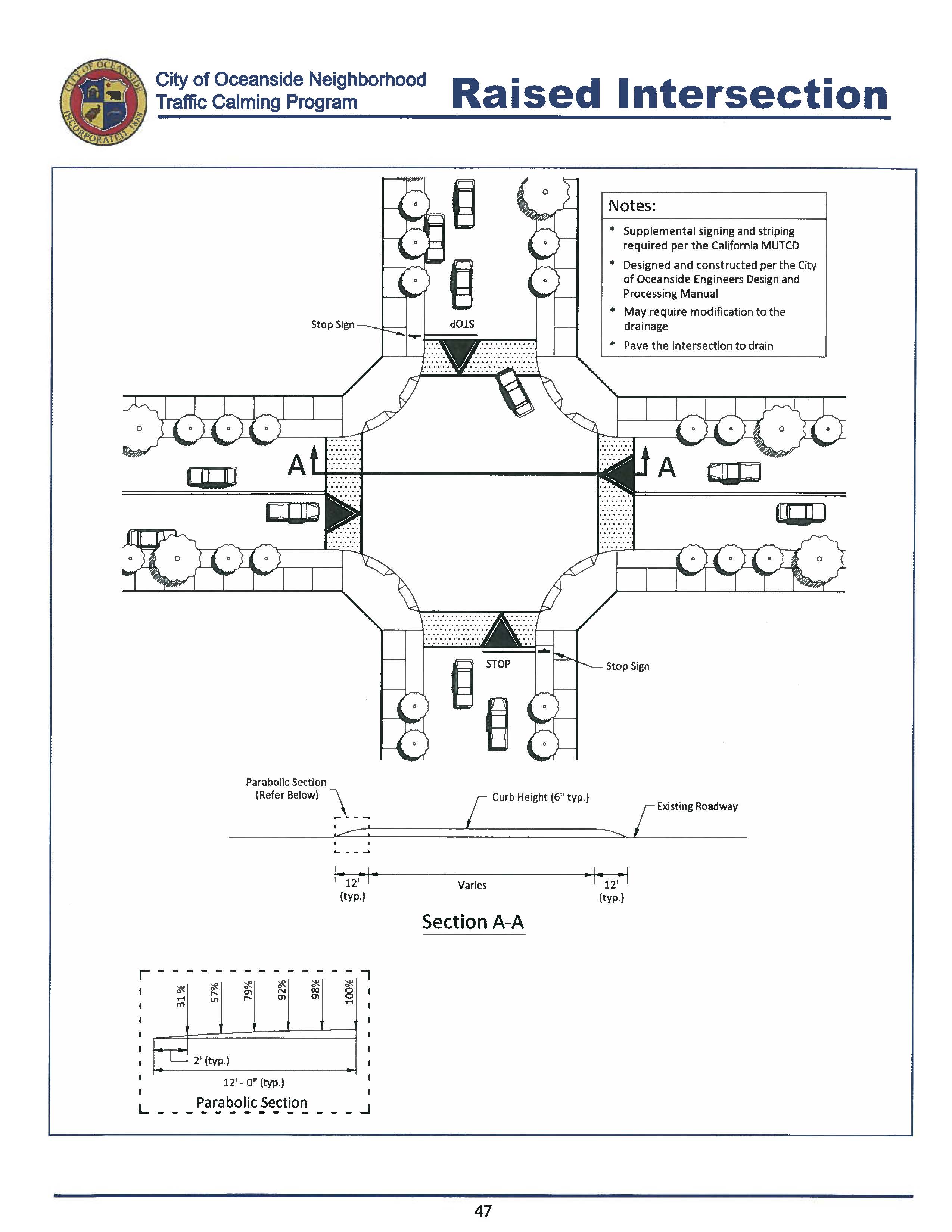Device name(s): Raised Intersections
Approximate Cost: $125,000– $150,000
Definition: A raised intersection requires motorists to reduce speeds as they proceed through an elevated intersection. Raised intersections are typically constructed to be six inches in height. Raised intersections are supplemented with appropriate striping and signage to adequately inform motorists of the traffic calming device. They are generally 4 inches higher than the surrounding road surface. raised intersections cover the entire intersection, with ramps on all approaches and often with brick or other textured materials on the flat section. They usually raise to the sidewalk level or slightly below to provide a “lip” for the visually impaired. Raised intersections are particularly useful in dense urban areas, where the loss of on street parking associated with other traffic calming measures is considered unacceptable. Raised intersections have been observed to result in a 1% reduction in speed (from an average of 34.6 234.3 mph).
Fast Facts:
- Can be used on Local Street- yes
- Can be used on Collector- yes
- Can be used on Arterial- no
- Reduces Speed- yes
- Reduces Volume- possible
- Noise Impact- yes
- Restricts Access- no
- Bicyclist Impact- no
- Transit Impact- no
- Parking Impact- no
- Emergency Response Impact- yes
Advantages:
- reduces speed through an intersection
- may improve safety for both pedestrians and vehicles
- visibility is increased for pedestrian/bicyclist at intersection
- less impact on emergency response time as compared to speed humps
- slows traffic in the most critical area and helps to make conflict avoided easier
- highlights intersection
- Cant have positive aesthetic value
- can calm to streets at once
Disadvantages:
- tends to be expensive, varying by materials used
- increases regular maintenance
- may increase response time for emergency vehicles
- impact to drainage needs should be considered
- less effective in reducing speeds than speed humps or raised crosswalk
Criteria/Application(s):
- intersections with substantial pedestrian activity
- areas where other traffic calming measures would be unacceptable because they take away on-street parking
- 85th percentile speed is 32 mph or greater
- 70% of all households in affected area must support

